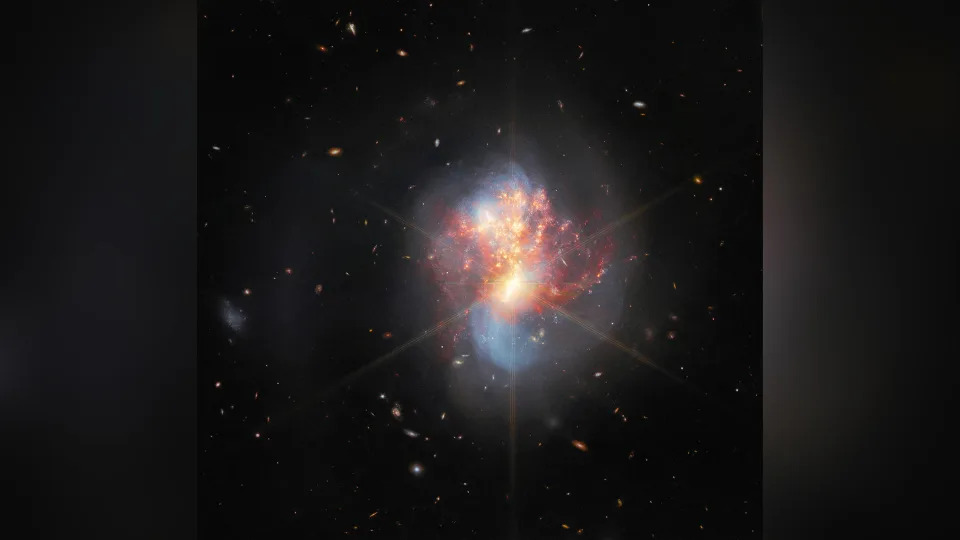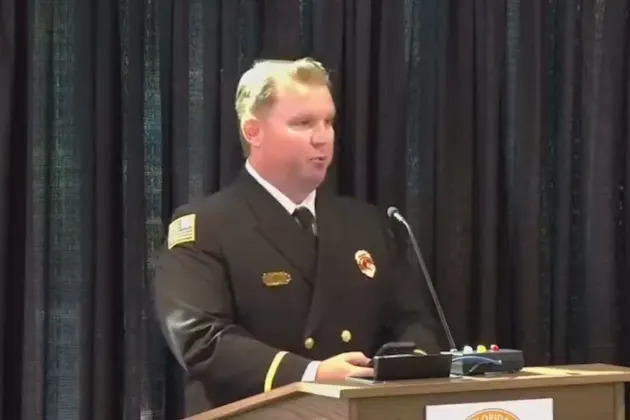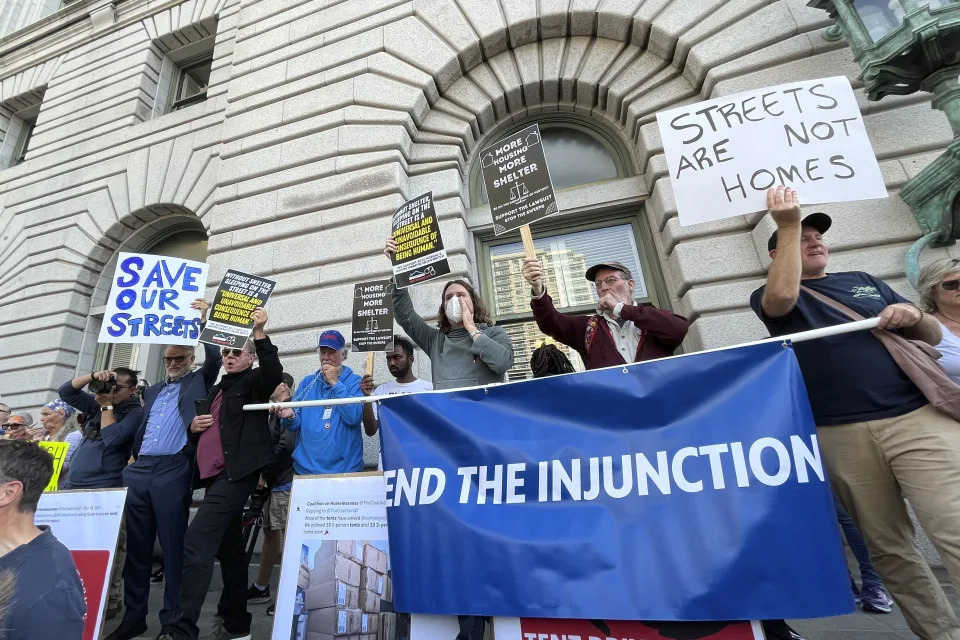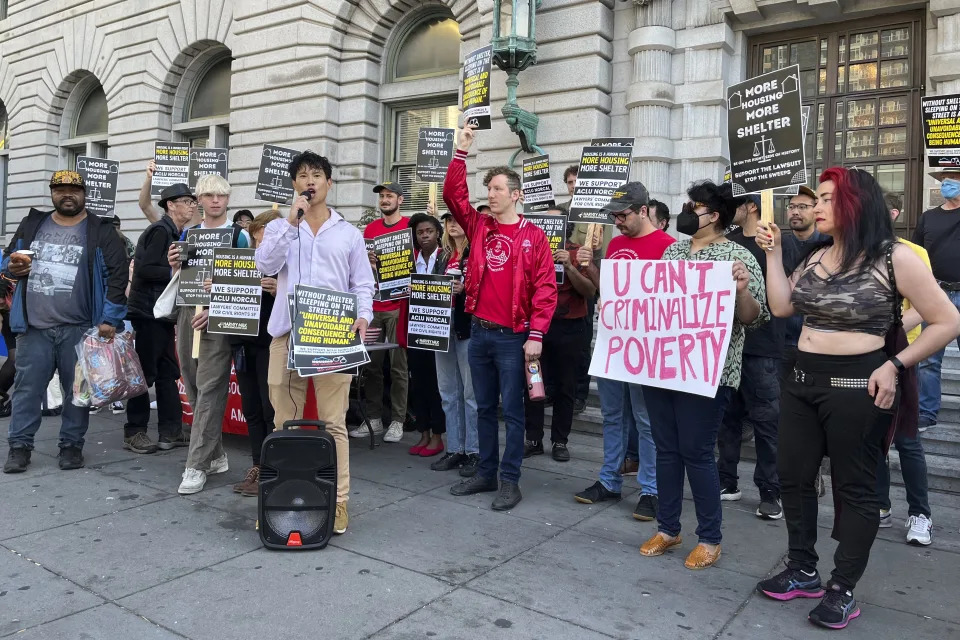Robert Lea
Wed, August 23, 2023

An illustration of a supermassive black hole.
Using the James Webb Space Telescope (JWST), astronomers discovered that when our 13.8-billion-year-old universe was between 4 billion and 6 billion years old, it housed fewer feeding supermassive black holes than previously suspected.
Such supermassive black holes, which can be millions, or even billions, of times as massive as the sun, grow by feasting on matter that surrounds them in the form of flattened disks called accretion disks. These black holes' gravitational influences also heat that material, thereby emitting tremendous amounts of radiation. When a black hole partakes in this extreme process, the whole region (including those radiation jets) is known as an active galactic nucleus, or AGN.
Though supermassive black holes exist in all large galaxies, not all of these gravitationally monstrous objects consume enough matter to reach AGN status. AGNs can radiate so much light they often outshine the combined light of every star in the galaxies they live in.
These findings, delivered by the JWST's Mid-Infrared Instrument (MIRI), offer insight into AGN properties and emphasize challenges associated with discovering these spectacles in the early universe. Supported by the Cosmic Evolution Early Release Science (CEERS) program, the results also hint that our universe may have been more stable than expected during its "teenage" years, which scientists have speculated was its most intense period of star formation.
Related: How did supermassive black holes get so big so fast just after the Big Bang?
The team reached their conclusions as they were studying a region of space called the Extended Groth Strip, which sits near the Big Dipper between the Ursa Major and Boötes constellations. The region, which contains an estimated 50,000 galaxies, has been studied extensively — but never with a telescope as powerful as the JWST.
"Our observations were taken in last June and December, and we were aiming to characterize how galaxies looked during the heyday of star formation in the universe," Allison Kirkpatrick, team leader and an assistant professor of astronomy and physics at the University of Kansas, said in a statement. "This is a look back in time of 7 to 10 billion years in the past."
Using MIRI, Kirkpatrick said she and her colleagues looked behind dust in galaxies that existed 10 billion years ago, which can hide cosmic phenomena such as ongoing star formation and growing supermassive black holes.
"So," she added, "I carried out the first survey to search for these lurking, supermassive black holes at the centers of these galaxies.”
Early supermassive black hole galaxies deliver a double suprise
This survey delivered a surprise for Kirkpatrick and her colleagues. They had expected the JWST to find many more AGNs than earlier surveys of the same region, such as one conducted with the Spitzer Space Telescope. But instead, only a smattering of additional feeding supermassive black holes were uncovered.
"The results looked completely different from what I had anticipated, leading to my first major surprise," Kirkpatrick said. "One significant revelation was the scarcity of rapidly growing supermassive black holes. This finding was prompting questions about the whereabouts of these objects."
She suggested this means black holes could be growing at a slower rate than estimated, and added that perhaps black holes' feeding rates were miscalculated by Spitzer because the telescope only allowed astronomers to spot the brightest and most massive galaxies with rapidly growing supermassive black holes.
Those are known to pump out more light than more than supermassive black holes that are feeding at a slower rate, thus making them easier to detect.

The Extended Groth Strip as seen by the James Webb Space Telescope
The growth of supermassive black holes in the early universe is an important mystery for space scientists to solve because these cosmic titans are believed to influence their surroundings a great deal. They can impact the growth of their host galaxies, for instance, and moderate star formation, thus making them an important element in the overall evolution of the universe.
"The study's findings suggest that these black holes are not growing rapidly, absorbing limited material, and perhaps not significantly impacting their host galaxies," Kirkpatrick continued. "This discovery opens up a whole new perspective on black-hole growth since our current understanding is largely based on the most massive black holes in the biggest galaxies, which have significant effects on their hosts, but the smaller black holes in these galaxies likely do not."
This wasn't the only surprise, however, that these galaxies dropped into the lap of Kirkpatrick and her team. The researchers were also taken aback by an apparent lack of dust in the galaxies they studied.
"By using JWST, we can identify much smaller galaxies than ever before, including those the size of the Milky Way or even smaller, which was previously impossible at these redshifts (cosmic distances)," Kirkpatrick said. "Typically, the most massive galaxies have abundant dust due to their rapid star formation rates."
"I had assumed," she continued, "that lower mass galaxies would also contain substantial amounts of dust, but they did not, defying my expectations and offering another intriguing discovery."
The work could also have implications closer to home regarding the inactive and slowly feeding supermassive black hole, Sagittarius A* (Sgr A*), that sits at the center of the Milky Way.
Basically, our galaxy's supermassive black hole is swallowing so little matter that if it were a human, it would exist on a diet of one single grain of rice every million years. But the team's results could imply that Sgr A* might not have always been such a conscientious eater.
They suggest even the Milky Way may have actually once had an AGN at its heart.
"Our black hole seems quite uneventful, not displaying much activity. One significant question regarding the Milky Way is whether it was ever active or went through an AGN phase," Kirkpatrick said. "If most galaxies, like ours, lack detectable AGN, it could imply that our black hole was never more active in the past.
"Ultimately, this knowledge will help constrain and measure black hole masses, shedding light on the origins of black holes growing, which remain an unanswered question."
Related Stories:
— James Webb Space Telescope offers a mesmerizing look at the Ring Nebula (photos)
— James Webb Space Telescope unveils the gravitationally warped galaxies of 'El Gordo'
— James Webb Space Telescope confirms 'Maisie's galaxy' is one of the earliest ever seen
The University of Kansas researcher has been granted more time with the JWST to continue her study of the Extended Groth Strip field with MIRI. That means while this current research focuses on just 400 galaxies, future work will center around as many as 5,000 early galaxies.
The team's research has been accepted for publication in the journal Astrophysical Journal, with a post-peer review version available on the paper repository arXiv.
Anna Demming
Tue, August 22, 2023

An artist's impression of two black holes subject to each other's gravity.
Researchers have identified a new speed limit for the universe’s most extreme collisions. According to a study published in the journal Physical Review Letters, the "maximum possible recoil velocity" for colliding black holes exceeds a whopping 63 million mph (102 million km/h) — about one-tenth the speed of light. This peak occurs when the collision conditions are at the tipping point between the two black holes either merging together or scattering apart as they approach each other, according to the study authors.
Next, the researchers hope to mathematically prove that this velocity cannot be exceeded using Einstein's equations for relativity, posing potential implications for the fundamental laws of physics.
"We are just scratching the surface of something that could be a more universal description," study co-author Carlos Lousto, a professor of mathematics and statistics at the Rochester Institute of Technology (RIT) in New York, told Live Science. This newly discovered speed limit could be part of a larger set of physical laws that affect everything "from the smallest to the largest objects in the universe," Lousto said.
Related: 'Runaway' black hole the size of 20 million suns caught speeding through space with a trail of newborn stars behind it
Quakes in the fabric of space-time
When two black holes pass close by each other, they will either merge or swerve around their common center of mass before flying apart. Whether the black holes fly apart or spiral into each other depends on their separation at the point of nearest approach.
To identify the maximum possible recoil speed of black holes flying apart, Lousto and study co-author James Healy, a research associate in the RIT School of Mathematics and Statistics, used supercomputers to run numerical simulations. These calculations stepped through the equations of general relativity describing how two interacting black holes will evolve. Lousto explained that although people began trying to solve these equations numerically more than 50 years ago, numerical techniques for predicting the size of gravitational waves from such collisions were not developed until 2005 — just 10 years before gravitational waves themselves were detected for the first time by the Laser Interferometer Gravitational-Wave Observatory(LIGO).

James Webb telescope observes two galaxies as they merge.
Since then, LIGO has observed nearly 100 black hole collisions. Comparing the data of one such collision with numerical relativity data revealed an "eccentric," or elliptical, black hole trajectory. Previously, scientists thought black holes approaching each other would spiral toward each other in near-circular orbits, Lousto said. The discovery of elliptical orbits broadened the range of possible collision events, and prompted them to look for extreme collision scenarios. "What we wanted to do is kind of push the limits of these collisions," said Lousto.
Lousto and Healy looked at how adjusting four parameters affected the outcome of gravitational engagement between two black holes: the initial momenta of the black holes, the separation between them at the point of closest approach, the orientation of any rotation the black hole might have around its own axis, and the magnitude of that rotation.
By running 1,381 simulations — each of which took two to three weeks — the researchers found a peak in the possible recoil velocities for black holes with opposite spins grazing past each other. While black holes give out gravitational radiation in all directions, the opposing spins distort this radiation, creating a thrust that adds to the recoil velocity.
"The recoil of black holes after they merge is a critical piece of their interaction," Imre Bartos, Associate Professor in the Physics Department at the University of Florida, told Live Science via email. (Bartos was not involved in the new study). This interaction is especially significant for places in the universe with a high density of black holes, since large recoil kicks might expel a remnant black hole from the region altogether.
"As with every limiting theoretical quantity, it will be interesting to see whether nature exceeds this in some situation that could signal deviations from our understanding of how black holes work," Bartos added.
Related: Could a black hole devour the universe?

An illustration of two supermassive black holes about to collide as gravitational waves spill into space
New fundamental physics
According to Lousto, the "tipping point" that determines whether two colliding black holes will merge or recoil is open to a bit of variability in the black holes' orbits. Because of this, Lousto likens this interaction to a smooth phase transition, like the second-order phase transitions of magnetism and superconductivity, as opposed to the explosive first-order phase transitions of heated water, for example, where a finite amount of latent heat is absorbed before it all boils. The researchers also glimpsed what might resemble the scaling factors characteristic of these phase transitions, although further high-resolution simulations are needed to identify these definitively.
Nonetheless, these aspects of the results hint at the possibility of "an overarching principle" that applies across scales from atoms to colliding black holes, Lousto said.
What is more, while marrying the two main pillars of fundamental physics — general relativity for gravity and quantum theory for the other fundamental forces — remains elusive, descriptions of black holes are closely tied to several theories that have opened chinks in the barriers between the two.
"This is far from rigorous proof," Lousto said. "But there is a line that deserves further research that maybe someone else or ourselves can make something of."













